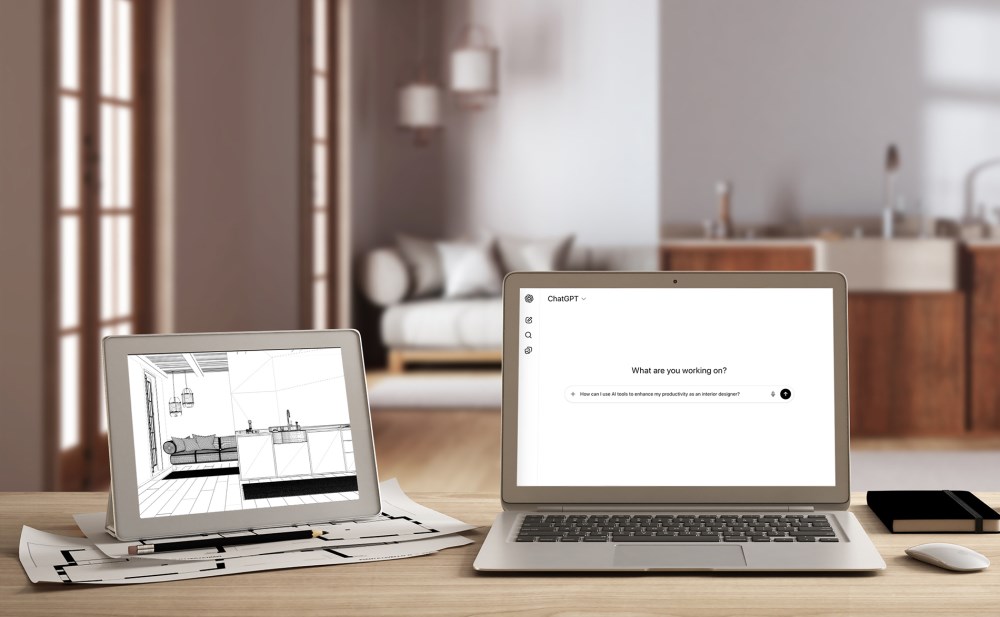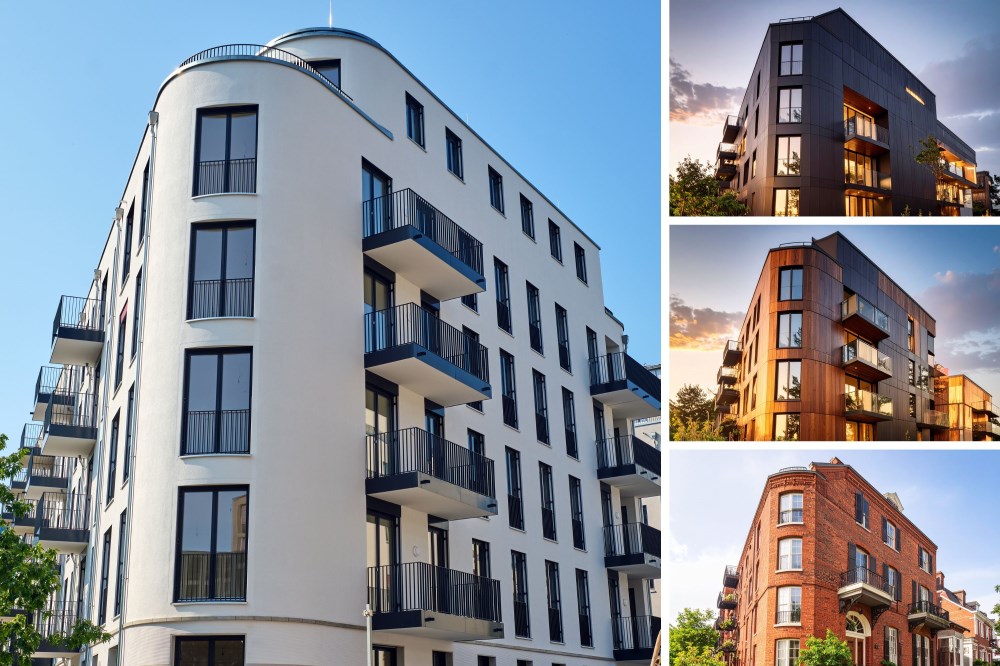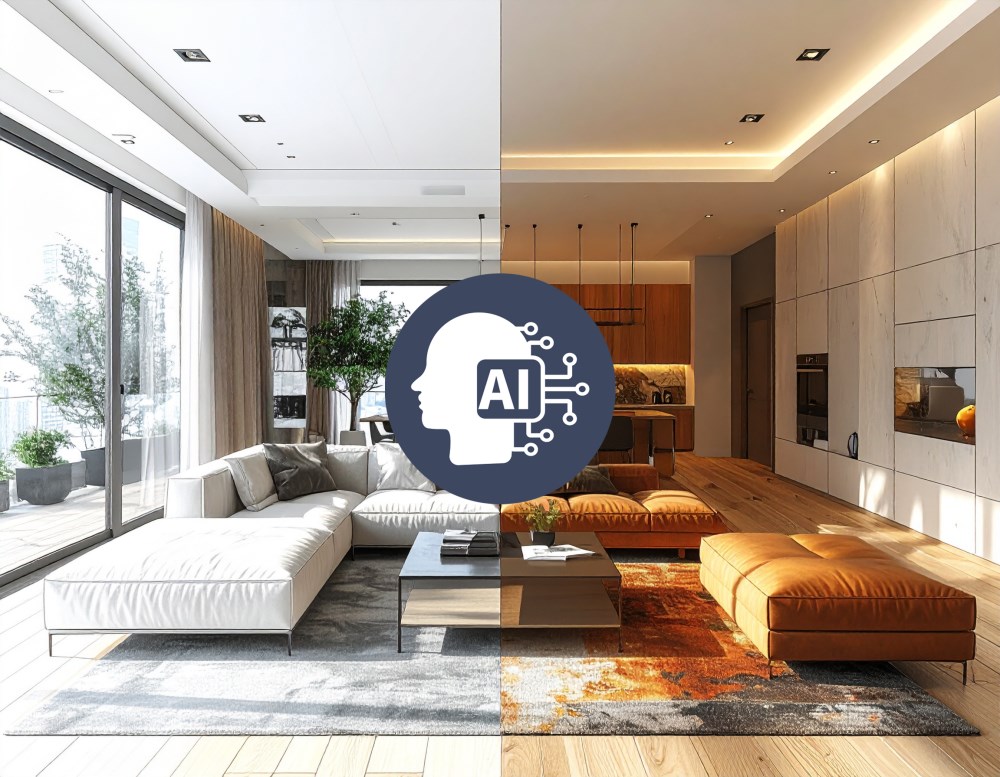The design world is experiencing its most significant technological shift since the transition from hand drafting to computer-aided design. Artificial intelligence has moved from buzzword to everyday reality in the design community. Designers have started experimenting with various tools and many have found ways to integrate them into their workflow. But the honeymoon phase is ending as real-world challenges emerge. Unlike previous technological advances that simply changed how designers worked, AI is challenging who can do design work and what professional expertise means. As capabilities expand and costs decrease, one question shadows every AI conversation. Will designers become obsolete?
AI’s Rising Popularity
Recent research from the American Institute of Architects reveals that only 6 percent of architects report using AI regularly, yet more than half have already experimented with it in some form. This gap tells a story: AI is firmly on the radar, but most firms are still in the testing phase. Younger designers often experiment with AI in visualizations or writing support, while firm leaders tend to ask strategic questions about data privacy, liability, and long-term value.
For all its novelty, AI cannot replicate the human qualities of empathy, intuition and contextual understanding. These traits remain central to architecture and interior design, which is why professionals continue to see AI as a helpful assistant rather than a substitute for creativity.

The Limits and Frustrations of AI
Real-world use often exposes AI’s shortcomings. As Naomi Wheeler, a Designer in Residence at Swatchbox, puts it: “AI can create incredible visuals, but it is still full of errors. You still need the human eye to deliver a project.” A misplaced shadow, a structurally impossible balcony, or a texture that shifts mid-surface may look convincing in an image but fall apart under scrutiny.
Philadelphia-based designer Annemarie Casino has noticed another frustrating aspect of the AI revolution: "Clients are starting to experiment with AI themselves. I am spending more time convincing clients that what AI shows them isn’t always possible. It can be frustrating.” Clients who arrive with AI-generated images often expect the impossible, leaving the designer to navigate not just the technical side but also the emotional labor of resetting expectations.
There is also the fear that some clients will rely on an image generator for their design work instead of hiring a professional. The appeal is obvious: type in a prompt, receive a glossy rendering immediately, and avoid the perceived expense of a designer. They may not realize that these images are deeply flawed. AI doesn’t take into account code requirements, budgets, construction logic, and the nuanced decisions that make a space functional and lasting. This puts designers in the difficult position of having to not only defend their value but also reframe the conversation around what professional design truly delivers.

How Design Professionals Are Using AI
Even with these frustrations, architects and designers are finding ways to use AI productively. Marco Castiglioni, a designer based in Italy, mentioned that his firm starts from a 3D model, then uses AI to clean textures, upscale resolution, and create presentation visuals. “It helps us look more polished when competing for projects, but it never creates the design from scratch,” he explained. This approach reflects a broader industry trend: AI is most valuable when it strengthens what already exists rather than inventing on its own.
Zaha Hadid Architects has been vocal about its embrace of AI. Since 2022, the firm has integrated generative tools like Midjourney and Gendo into their early workflows. This has resulted in a doubling or tripling productivity in initial concept design, and cutting preparation timelines for competitions by up to 50 percent. Yet even here, AI does not determine the direction of the design. It accelerates options, creates polish, and frees human designers to focus on refining the ideas that matter.

Architecting the Metaverse by Zaha Hadid Architects and Refik Anadol Studi - created with OpenAI DALL-E 2
Autodesk has also been vocal about the role AI can play in architecture. Their focus has been on using AI's potential to improve efficiency across drafting, layout, structure, and material choices. Built-in AI features within BIM systems are reshaping collaboration by offering real-time updates, predictive scheduling, and clash detection. These tools extend to client engagement as well, with AI-powered AR and VR experiences allowing immersive walkthroughs before construction begins. The result is smoother communication, stronger decision-making, and greater efficiency, all while keeping creative control firmly in the hands of designers.
Tools to Explore for Smarter Workflows
For designers looking to integrate AI in thoughtful ways, several practical applications stand out.
Visual enhancement and rendering
Platforms like Magnific AI , Krea, and Veras can take a basic SketchUp or Revit export and upgrade it into a high-resolution, presentation-ready image. Features like texture upscaling, lighting refinements, and quick alternative renderings help firms look client-ready without hours of manual editing.
Concept generation and design alternatives
Generative systems such as Midjourney, Maket, or Adobe Firefly can help architects quickly test design directions. Whether suggesting façade treatments, color palettes, or spatial layouts, these tools provide a launchpad for exploration while leaving final decisions in human hands.

Three different cladding options generated with Adobe Firefly from a stock photo of an existing building
BIM and technical support
AI is increasingly being built into BIM platforms. Tools like Autodesk Forma and Archicad AI Visualizer enable predictive energy modeling, early code compliance checks, and clash detection that keeps teams coordinated. Emerging options like UrbanGPT show promise for automating feasibility studies and compliance drafts that designers can later refine.
3D modeling and renovation support
Programs such as Kaedim and Sloyd reduce the manual lift of creating 3D assets or scanning existing conditions. These can be especially useful in renovation projects, where accurate digital twins speed up planning and improve collaboration across disciplines.
Marketing and communications
One of the most overlooked but time-consuming tasks for small firms is consistent outreach. AI tools like ChatGPT and Claude can draft social media captions, refine LinkedIn posts, or outline newsletters. Paired with scheduling platforms, they help firms present themselves with the same consistency as larger practices without stretching internal resources.
Looking to the Future
The story of AI in design is still unfolding, but one pattern is already clear. Architects and interior designers are not being replaced. They are experimenting, adapting, and deciding for themselves where AI adds value and where it is of no use. Tasks like render enhancement, drafting long documents, or running code checks are obvious candidates for automation. Other tasks, such as balancing cultural nuance, interpreting a client’s vision, or selecting materials that create atmosphere, remain entirely human. AI is best understood not as a rival, but as a partner.
--
 Swatchbox is a premier sample fulfillment service for building product manufacturers. With proprietary software designed by insiders of the design community, Swatchbox helps manufacturers improve product sales and brand affinity by delivering material samples to the design community with speed, intelligence, and style. Learn more and join Swatchbox at www.swatchbox.com.
Swatchbox is a premier sample fulfillment service for building product manufacturers. With proprietary software designed by insiders of the design community, Swatchbox helps manufacturers improve product sales and brand affinity by delivering material samples to the design community with speed, intelligence, and style. Learn more and join Swatchbox at www.swatchbox.com.



 Liz Keizerwaard
Liz Keizerwaard











